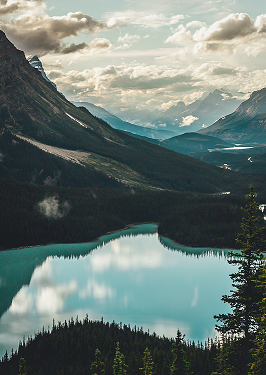Starting this year, World Lakes Day will be celebrated every August 27, with the aim of raising awareness about one of our planet’s most vital natural resources. Lakes play a key role in maintaining biodiversity, providing a habitat for countless species of fish, plants, and wildlife.
Importance of lakes
Lakes are a crucial source of fresh water, supporting drinking water supplies, agriculture, and industry.
Beyond their ecological importance, these ecosystems contribute to climate regulation, keeping the planet cool, absorbing floodwater, and storing carbon.
In addition, lakes provide recreational and economic opportunities, attracting tourism, fishing, and other activities that support local communities.
However, lakes are affected by a combination of overuse, pollution, and climate change. Lake pollution is often caused by inputs of fertilizers, pollutants, and solid waste that are dumped directly or washed into lakes via rivers, and this is exacerbated by global warming, leading, for example, to more frequent and intense flooding.
Lake water levels are also changing dramatically. Rising temperatures and changes in cloud cover are causing a decrease in ice cover, which increases the rate of water evaporation.
Lakes in numbers
There are more than 117 million lakes on Earth, covering almost 4% of the planet’s land surface.
Although most freshwater is stored in glaciers and aquifers, lakes contain around 90% of surface freshwater, making them crucial and immediate sources of supply.
Lakes are facing serious deterioration. By 2050, their ecosystem value could decline by 20%, pollution could double, and methane emissions could increase, exacerbating both environmental damage and economic losses.
Freshwater species have declined by 85% over the past 50 years.
The Uros and Lake Titicaca: connection with nature
Titicaca is the highest navigable lake in the world. It is located in the central Andes, within the Collao plateau, at an altitude of 3,812 meters above sea level, between the territories of Peru and Bolivia.
Lake Titicaca benefits more than three million people who live around it and has a unique biodiversity. Many different species of birds, fish, and amphibians depend on it for survival.
Just 7 km northeast of the city of Puno, Lake Titicaca is home to around 100 floating islands built entirely from totora, an aquatic plant that grows in its waters.
The Uros have perfected the art of using this plant not only to build their islands, but also to create rafts, dwellings, and everyday objects. The totora is woven and arranged in layers on the surface of the lake, allowing for the creation of floating islands that are renewed every two months to ensure their stability.
Each island is the result of collective and meticulous work that requires skill, patience, and cooperation. Through this ancient tradition, the Uros demonstrate their deep connection with nature.


